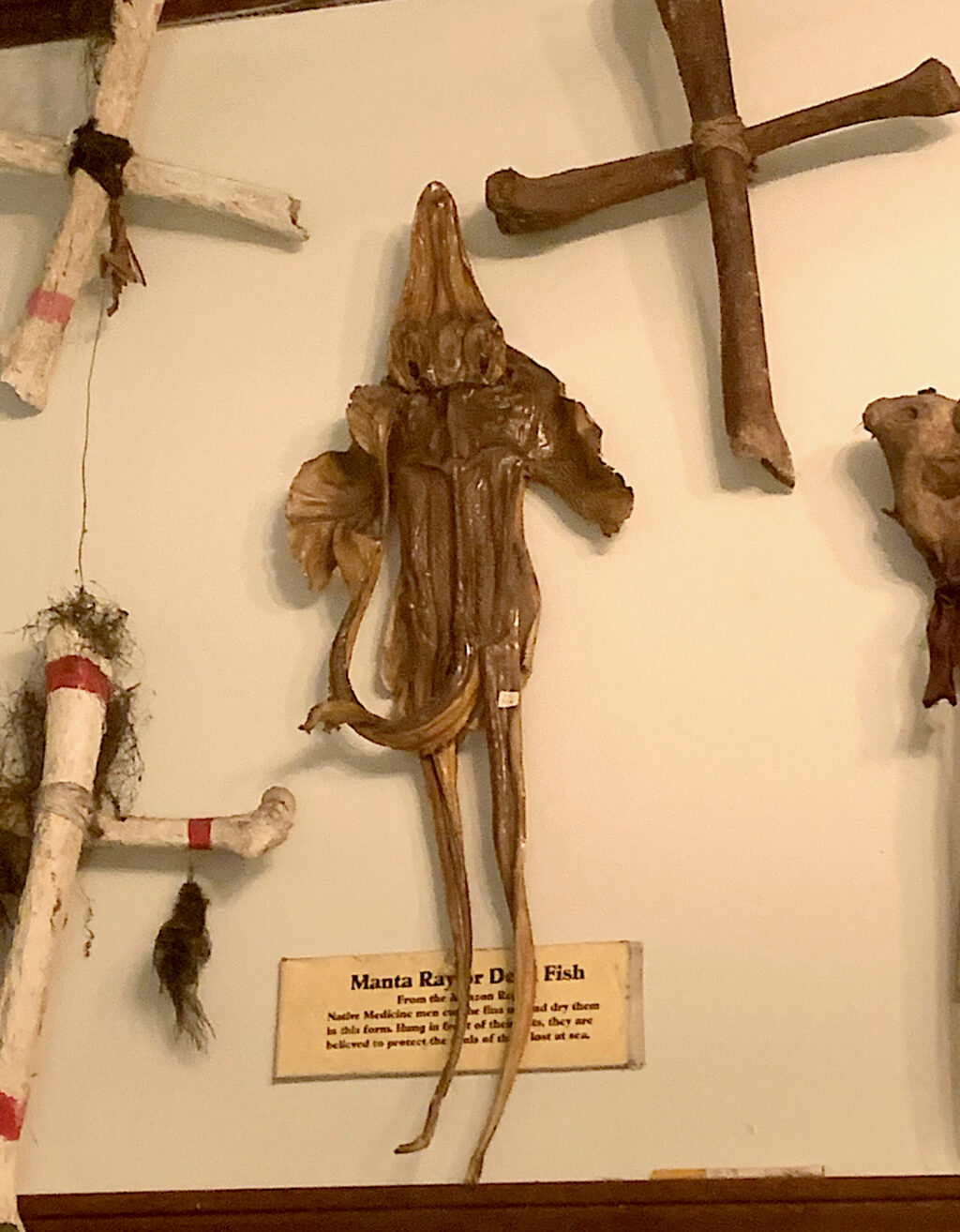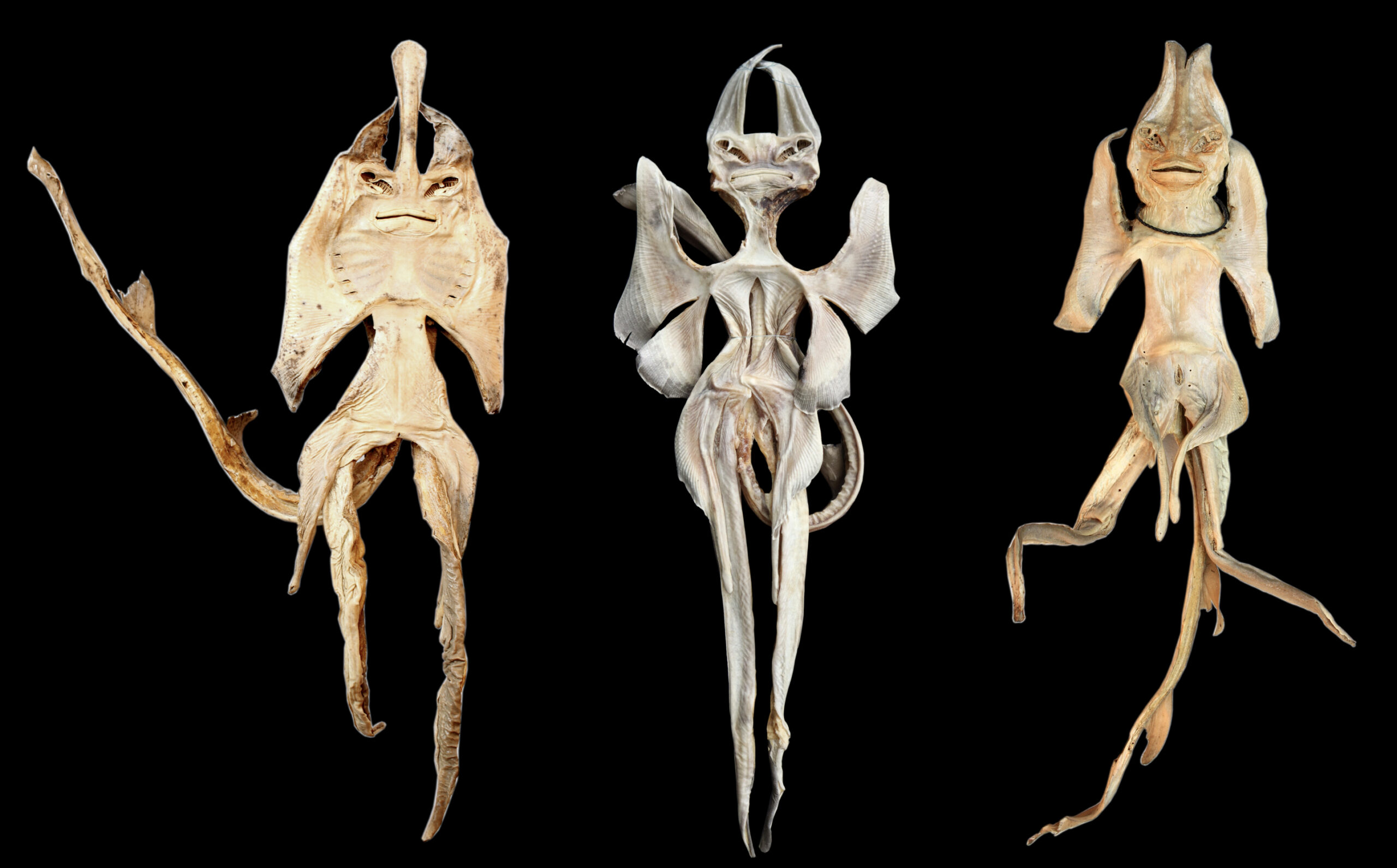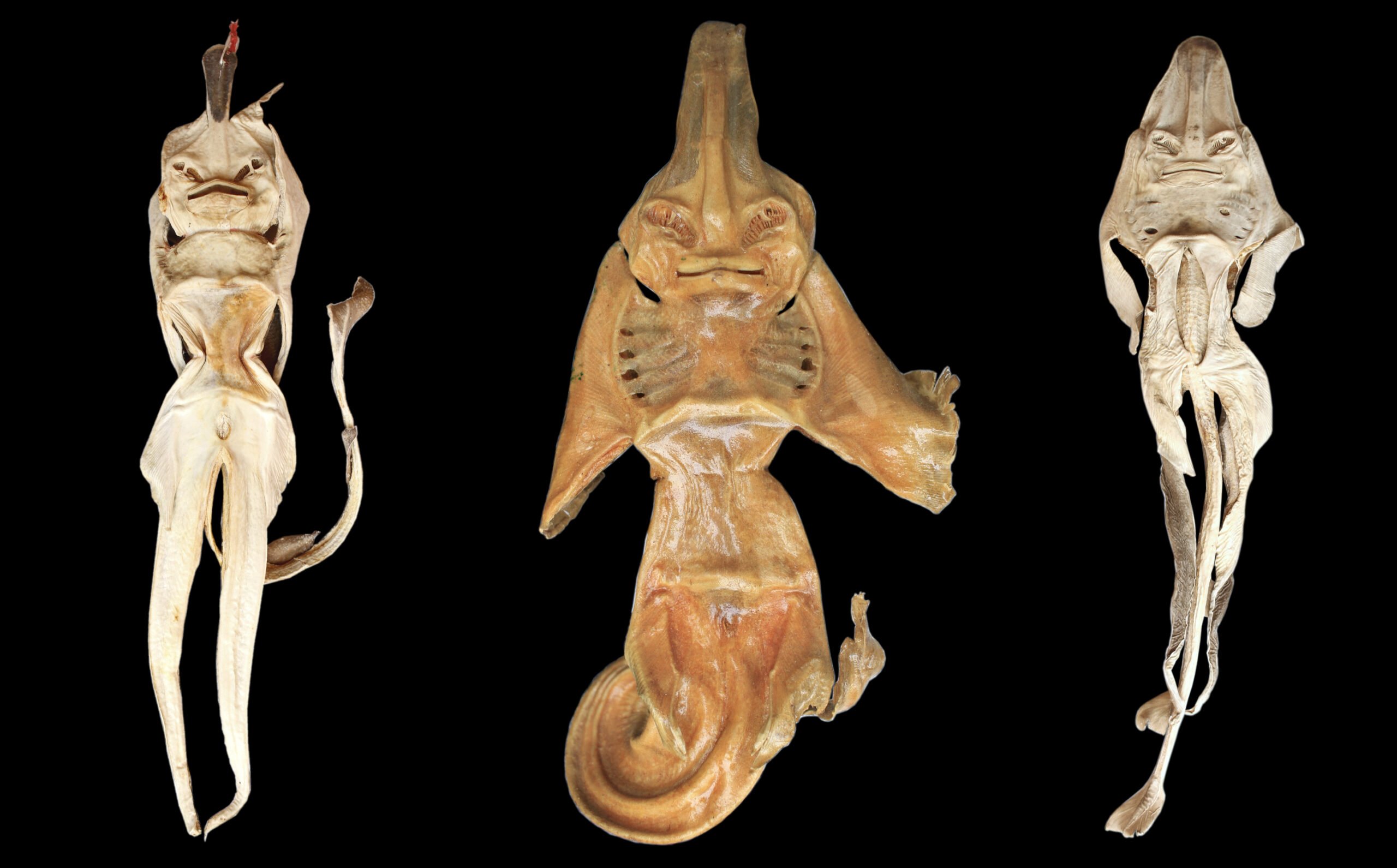Modified guitarfish: An ‘invisible’ wildlife trade
In my previous blog, I discussed how batoids (Superorder Batoidea), commonly known as “rays,” are being cut and modified to resemble life-like mythical creatures for various purposes worldwide. Even though the practice of modifying batoids can be traced back as early as 1558, appearing in Conrad Gesner’s book “Historiae Animalium liber IV”. Today, little information is available regarding the use and trade of modified guitarfishes to create such cryptid items (for further details, see Guitarfish: from mythical creatures to alternative medicines).

A modified guitarfish is displayed at the New Orleans Historic Voodoo Museum in Louisiana, USA. Photo © Ryan Lehman
In this blog, I want to share some modified guitarfishes that I have documented, thanks to the help and support of many people. So far, we have discovered that modified guitarfishes are like snowflakes in that no two are exactly alike. In fact, in the process of creating these taxidermized cryptid items, artisans/fishers put in different amounts of effort and imagination, resulting in numerous creative forms. Some modified guitarfishes have more disfigured bodies than others, and some are varnished or painted. But the big enigma here is knowing which species are commonly used to create such taxidermized items. Many guitarfish species are threatened with extinction according to the IUCN Red List, and this type of trade has been largely undocumented despite having a long-standing history.


Guitarfishes (family Rhinobatidae) are cut, shaped, and modified to resemble life-like cryptid creatures. Photos © Bryan Huerta
Recently, the family Rhinobatidae (37 species) was listed under CITES Appendix II. This means all rhinobatid species are now subject to international trade regulations, which is excellent news! However, this does not mean that rhinobatids are now safe and sound. Many challenges are ahead to prevent further guitarfish population declines. Perhaps the biggest challenge is managing and regulating the domestic demand and trade of these small guitarfishes in many countries. However, as people colloquially say, “Rome was not built in a day.” At the same time, this is a huge step forward in guitarfish conservation to preserve them so future generations can enjoy these magnificent fishes!

A pile of guitarfishes (genus Pseudobatos) is being commercialized for human consumption in Mexico. Photo © Bryan Huerta
